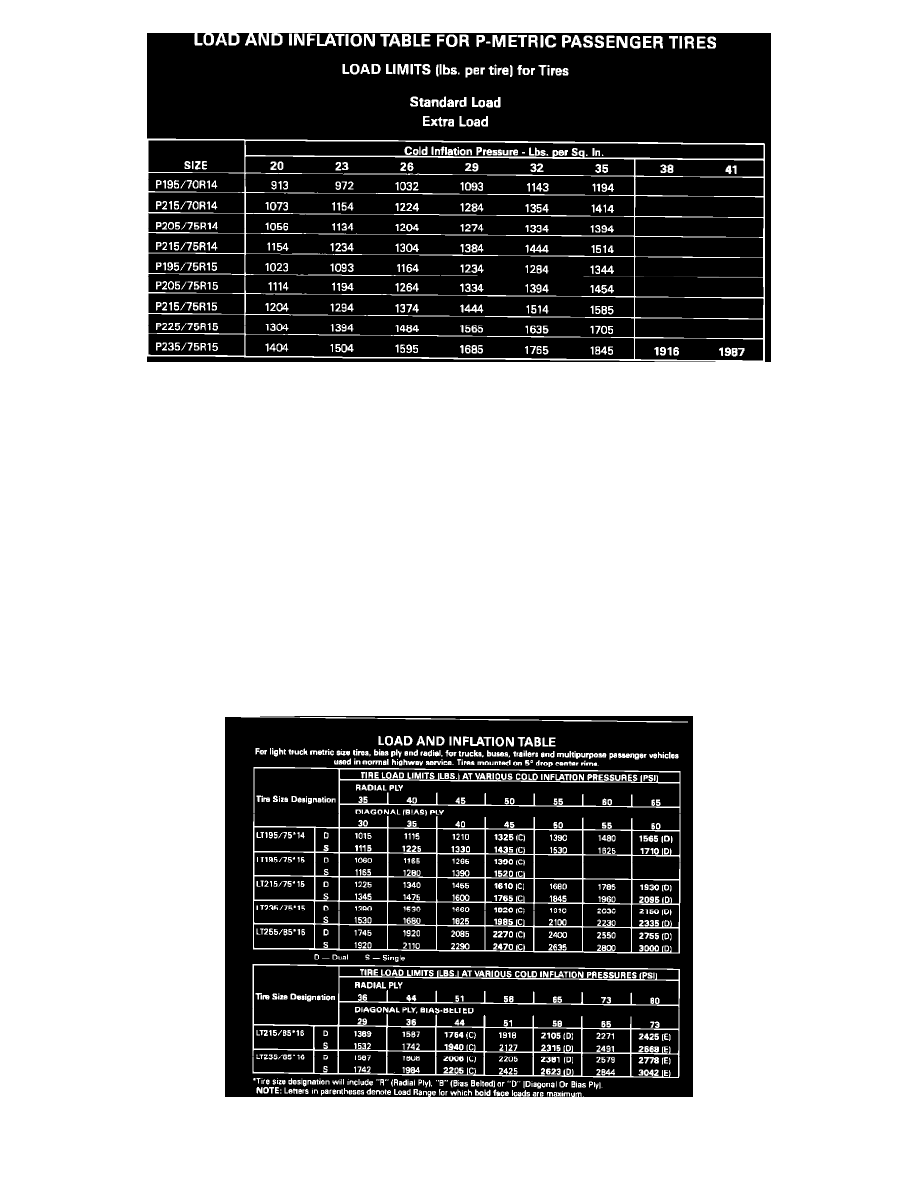Ranger 2WD V6-177 2.9L (1989)

FIGURE 2
^
For P-metric passenger tires on passenger cars, the values are as shown on the tire.
^
For P-metric passenger tires on light trucks, the load ratings are reduced to 91% to reflect the "harsher" truck environment, Figure 2.
^
For light truck style tires used on light trucks, the values are as shown for tires used in single wheel applications.
^
For light truck style tires used in dual wheel applications, the tire capacities are derated.
Often, inflation pressures for specific vehicles are less than maximum capacity because the load to be carried is less than the maximum tire capacity.
Inflation pressures for originally installed size tires on a vehicle are shown on the vehicle certification label along with the tire size and rated capacity for
the axle system. Check the size and inflation information on the label to properly inflate the tires. Be sure that the same size tire is actually on the vehicle
and then inflate it to the label's specified pressure. If other than original size tires are on the vehicle, the label's pressures are probably not correct
To find proper pressures for other than original tires, use the following procedure.
1.
Obtain both front and rear axle capacity ratings (GAWRR and GAWRF).
2.
Divide each number by 2 to obtain the capacity at the tire.
FIGURE 3
